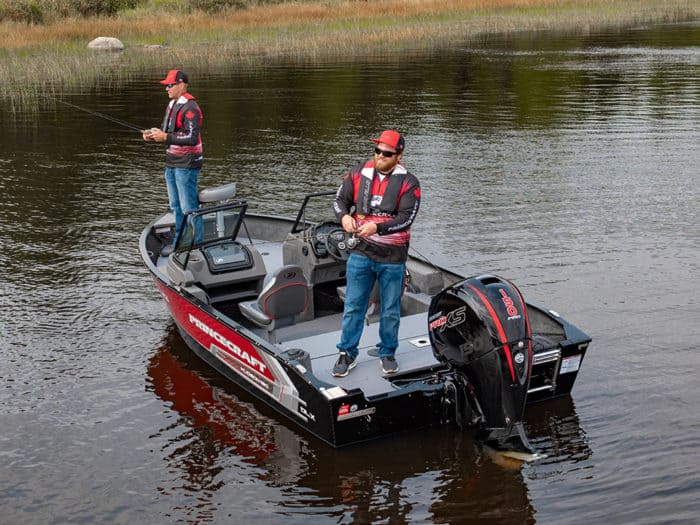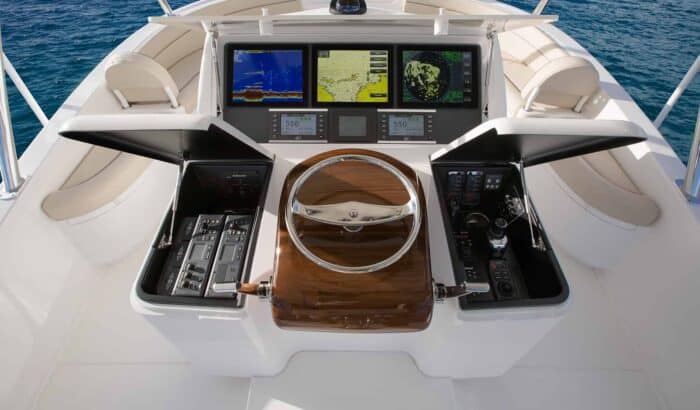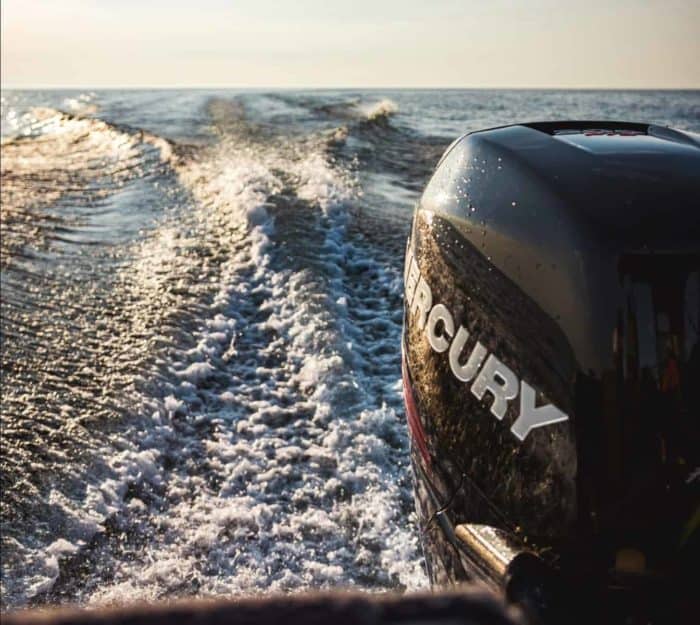How to Drive a Boat
If you have never driven a boat before the task will either seem daunting or, ironically and potentially dangerously, the exact opposite. Newcomers to boating often fall in one of those two categories – some are nervous and unsure of how to proceed and others are just brimming with confidence.
Although there are major differences, it’s worth thinking of driving your own boat something like driving a car. Both require attention to detail, caution, patience and skill. There’s no reason to be intimidated and lacking in confidence once you have understood the fundamentals. And, conversely, it should never be treated like a joke and done unsafely. There’s a reason people take courses to learn how to boat and that there are so many rules of the road for boating. Just like driving a car, serious accidents can happen when people are not careful.
Pontoon Boats vs Motor Boats and Sails vs Outboard Motor

One thing to be aware of right off the top is that different boats do require different skill sets and knowledge sometimes. A boat that operates with a jet drive engine can be controlled differently than one with a standard outboard motor. And pontoon boats are usually a standout when it comes to operating a boat that makes them feel and operate differently than a “normal” boat.
A sailing vessel will handle significantly differently than a motor boat. Because that’s a totally different skills and knowledge base, we cover it elsewhere. It’s worth remembering that sailing in particular can take a long time to learn to do well, so our guide is a good primer but practice definitely makes perfect.
Likewise, because pontoon boats handle differently, we also have a guide on how to drive a pontoon boat that you can check out if you’re interested in pontoons.
All of that said, let’s dive in and take a look at the basic steps you’ll need to take to properly and safely drive a boat.
Getting Started

The first thing anyone on a boat ought to be doing before anything else is making sure you’re operating the vessel safely. You’ll want all your safety equipment on board before you leave, including life jackets, VHF radio, first aid kit and so on. A pre-departure checklist is always a good thing to have.
Gas powered outboard motors need to be treated with some caution, especially before you set out. Dangerous fumes can build up in the engine compartment if the boat has been sitting. That’s why engines have blowers to help vent those fumes.
If your engine has a blower or exhaust fan, make sure you run it for the recommended length of time before starting your boat. Check the fuel lines on smaller boats as well, since they have a tendency to have more problems than larger vessels.
Steering Wheel vs Tiller

For the sake of this article we’re assuming you have what most laypeople would call a motorboat and that can be anything from a jon boat to a center console to a yacht, really, though presumably you’re not getting a yacht and driving it for the first time while reading this article.
Many modern boats, whether they use an inboard, outboard, or even jet drive engine, make use of a steering wheel. These operate mostly the same as the wheel of your car would. They’re familiar and easy to understand in terms of operation. Twin engine boats are also easily controlled with a wheel so no need to worry if you’re unsure of how a twin engine boat might operate.
Some boats, especially smaller vessels, make use of a tiller controller located at the stern of the vessel with the outboard motor. This kind of control can be a little more daunting for some people because it is quite different than using a steering wheel. That said, you will probably get better control and maneuverability with a tiller, so it’s worth trying out
Driving a Tiller Controlled Boat

You’ll want to start by making sure your boat is in neutral and priming your motor. Press the primer button a few times to get fuel into the boat engine. Just a couple of times at most to avoid flooding the engine, though. It may take more but there’s no single answer as it changes from motor to motor, so be cautious at first and you can always prime it more later if need be.
When you’re ready, grab the starter cord handle and pull it a few times, at least three or four. It’s a lot like starting a gas mower or chainsaw, if you’ve ever used one of those. You may need to open the choke valve if your engine has one, which adjusts the air pressure, and try again if the engine isn’t starting. Older outboards will have a choke on them but most newer models have made this an automatic process and it’s not something you need to worry about.
Once the engine has started, adjust the choke again if applicable until your engine sounds as smooth and even as it can while it’s idling. Once you have it running smoothly, you’re ready to go.
Make sure you’re not set for running in reverse and place your hand on the tiller handle. Most engines have a shifter mounted on the front of the engine near the tiller somewhere that lets you switch gears.
You should be sitting either left or right of the tiller, depending on what gives you the best control of the boat. If the tiller isn’t long enough for you to operate in a comfortable manner, you can pick up extensions that will allow you to have better control.
You can accelerate by twisting the handle at the end of the tiller control, somewhat similar to how accelerating on a motorcycle works. Twist it back to decelerate when necessary.
The biggest problem new boaters tend to have with tiller steering is getting used to how it steers. The bow will move in the opposite direction of how you push the tiller. Push it right, your bow moves left. Push it left, your bow moves right. You’ll get the hang of it very quickly but at first it can be confusing for people who have never steered a boat this way.
If you find the tiller hard to push in either direction, there should be a handle for adjusting tension to make it easier for you. And that’s pretty much all there is to tiller steering. You’ll need to try it out for a while to get the hang of your particular boat and motor, but the basics apply to any boat. Just remember to be cautious and take it slow at first until you’re comfortable.
Driving a Motor Boat (Other Than a Pontoon Boat)

We’re assuming that you’ve done all your pre-departure checklist stuff at this point. Everyone is on board, safety gear is good, you’ve released all the lines keeping you docked and you’re just ready to leave.
Note: Nearly every modern boat uses a kill switch of some kind these days. This usually involves a lanyard attached to your life vest or belt, or some kind of bracelet or wrist-mounted attachment that physically connects you to the boat and has to be plugged in to get the boat started. The purpose of this kill switch is that if you pull away from the console and the steering wheel, the lanyard pulls away and the engine is automatically shut off. This safety measure ensures that if something happens, such as you going overboard, the boat will turn off. This is to help prevent injury and death as much as possible so the boat doesn’t leave you behind, you can’t get caught in the propeller, and it can’t continue wildly, potentially turning back and injuring you.
- For a boat that uses a steering wheel, any of the more modern boats, you’ll get it started either by turning a key in the ignition or pushing a button to get the motor started. If nothing happens when you do this, make sure you check your throttle and ensure that you’re trying to start in neutral. Most boats won’t let you start unless you are in neutral as a safety precaution as you don’t want to press the ignition and just take off all of a sudden.
- Once the motor is running, you can now engage the throttle. You’ll want to push the throttle handle forward slowly, especially since this is your first time with this boat and you’re not sure how it will respond. Some boats can surprise you with a real kick, others take some time to ease into it. Again, this is like driving a car. You need to get a feel for how it handles if you want to operate it safely and the best way to do that is to be cautious.
- Make sure you have good visibility all around and take stock of where you are,what’s nearby and what may be approaching before you begin moving. Driving a boat requires you to be aware of your surroundings even more than when you’re in a car. Cars drive on roads and the pathways are typically clear, defined and easy to see. Boats can come at you on the water from all around, plus there may be obstructions, both hidden and otherwise, that you need to be cautious of.
- Ease into the throttle and you should feel it click into gear and start moving. Let it proceed slowly and take hold of the steering wheel, using it in much the same way you’d steer a car.

- Steering is slightly different than it is on the road, of course, but you won’t want to make wild left and right over corrections at any point if you want to remain on a controlled path. Because the wind, the state of the water, the power of your motor and the overall shape of your hull can affect how your boat steers, this is another thing that requires a specific learning curve. This is also why steering a pontoon boat is a lot different than other boats, because of how it handles on the surface of the water. Turning sharply, for instance, can lead to the turn continuing out of control if you don’t correct for it. Water is a much different surface than pavement when it comes to maintaining steering control, so keep that in mind.
- As you get up to speed, take it easy and advance the throttle gently. If you need to slow down, ease back gently until you hit neutral. This is where things really differ from a car. While a car does have the gas pedal and the brake pedal, if you ease off the gas your car will slow over time. If you let the throttle go on your boat it will stay at that speed. You may find this a hard thing to adjust to at first if you need to slow down because it’s counterintuitive compared to driving a car. If you get caught in a tight spot that requires fast action, like adjusting to a sudden wave or wake, it can take you by surprise and you may forget what to do. So remember, ease back on the throttle to slow down.
- You can alter the trim of your boat to improve speed and performance as well. You will get better gas mileage and speed, as well as have a smoother ride if you can keep the boat running parallel, or as close to it, with your at rest waterline. That means controlling how the bow of your boat is positioned when it motion, getting it raised or lowered as necessary. We call that trimming the boat and you can adjust the angle of your motor in or out to raise or lower the bow as necessary.
Most modern boats can adjust the trim with the push of a button to make it easier for you. It does require a bit of a learning curve to get right, however. If the trim is adjusted poorly you can actually end up swamping the boat. Power trim is not the best way to trim a boat, trim tabs really help with that, but it’s better than nothing and as you’re just learning how to operate the vessel, it should be good enough. You can learn more about trim and trim tabs by checking out our article here.
- If you are trying to maneuver in a tight place like into a slip or dock, or among other boats, put the boat in neutral to give you some better control. You won’t be fighting against the motor trying to push you forward, even at slow speeds, in this case.
- If you find yourself proceeding toward waves or a large wake, make sure you don’t let the boat hit it straight on. The best way to approach wakes and waves is by crossing them at a 45 degree angle, or as close to it as you can manage. That will allow the smoothest transition of the bow across the wave while causing the least disturbance to everyone on the boat. This is not always possible, of course, but try to manage it the best you can.
The Bottom Line
Driving a boat is similar to driving a car, provided you’re using a steering wheel, but not exactly the same. There are many safety precautions you need to be aware of in order to ensure you are able to control your vessel properly.
Maintaining a safe speed and a proper lookout are two of the most important factors in being able to drive a boat. Each boat responds differently and, as a result, if you are just learning then the best advice we can give is to take it slow and steady. Make sure you are confident and safe in all that you do as you develop a feeling for how the boat controls and how you can best operate it.
Categories: Boats











